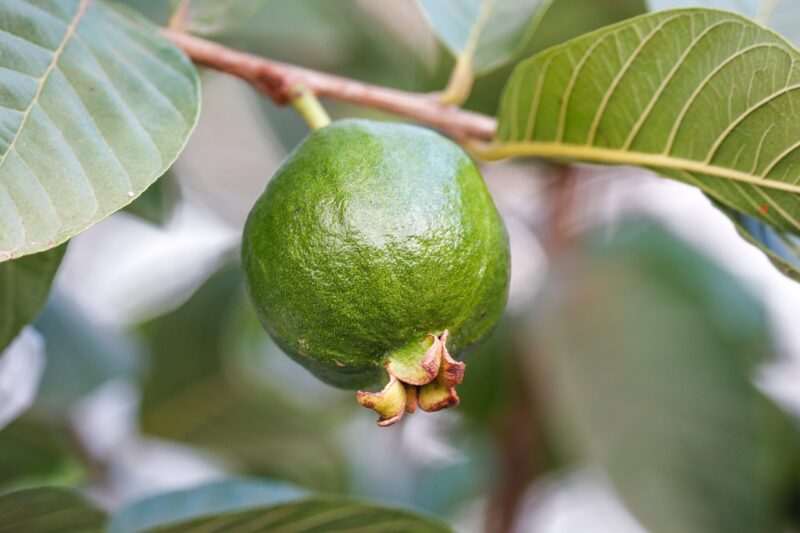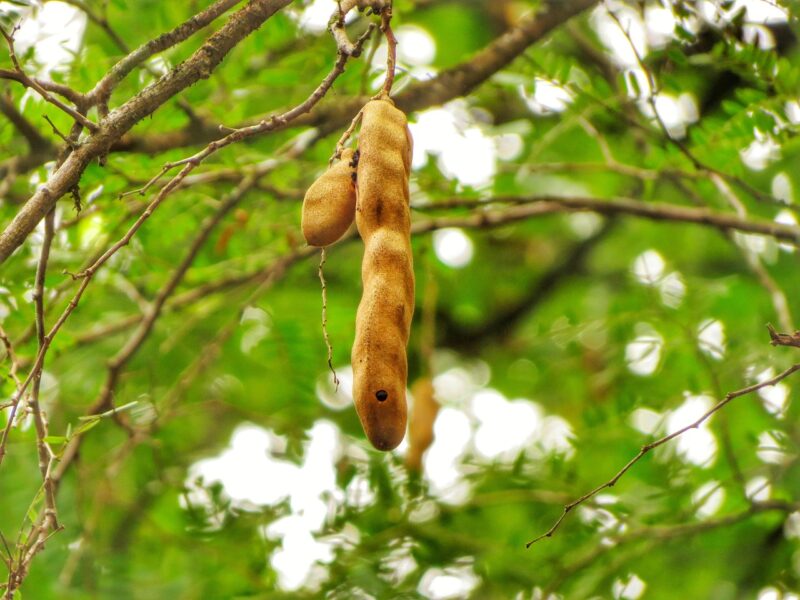In this guide, we will explore the best fruit trees to grow in Florida, along with their unique characteristics, regional suitability, and detailed growing information to support your gardening endeavor.
Avocados

Florida is an avocado haven, particularly for varieties that thrive in warm, humid climates. The ‘Hass’ and the West Indian-style avocados flourish and yield creamy, nutrient-packed fruits that are deliciously versatile, perfect for use in salads, spreads, and even desserts. Apart from their culinary delights, avocados are rich in healthy fats, vitamins, and minerals, making them a nutritious addition to any diet. They can grow quite large, so planting them in a spacious location ensures they flourish without obstruction. Avocado trees also attract various pollinating insects, supporting local biodiversity.
Growing Conditions:
Soil: Thrives in slightly alkaline, well-drained sandy soil enriched with organic material.
Sunlight: Full sun requirement; minimum of 6 hours of direct sunlight is ideal.
Regions: Best suited for South Florida, particularly coastal areas and southern hardwood regions.
Care Tips: Regular watering is essential during dry spells, but take care not to let the roots stay waterlogged. Fertilize with potassium and nitrogen during the growing seasons to support healthy growth.
Cultivating avocados can yield a regular supply of creamy, nutrient-dense fruit, all while contributing positively to the environment.
Bananas
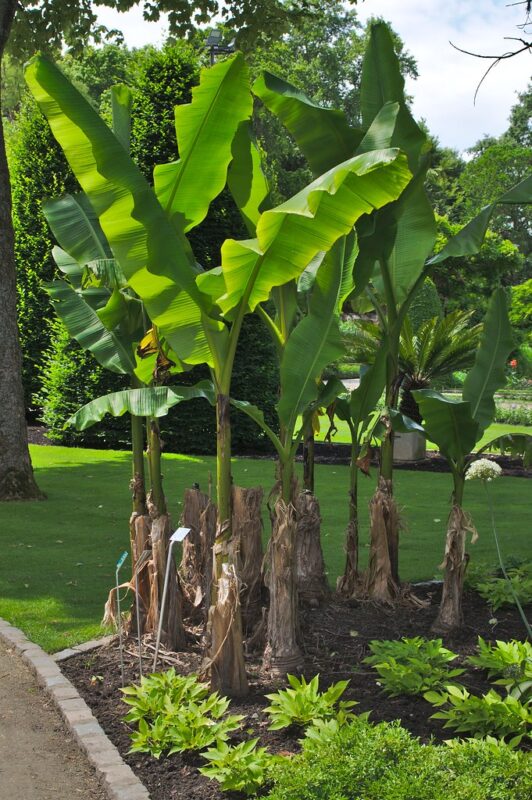
Banana trees are perfectly suited to Florida’s tropical environment, allowing gardeners to enjoy the spectacle of their lush foliage alongside sweet fruit throughout the year. Varieties like Cavendish and Red bananas not only produce delicious and nutritious fruits but also provide substantial shade. Rich in potassium, vitamins, and fiber, bananas are an excellent source of nutrition and can be enjoyed fresh, in smoothies, or baked into delicious treats. The ease of growth and resilience make banana trees an appealing choice for both novice and experienced gardeners. Banana plants also contribute to the overall ecological health of your garden by attracting pollinators.
Growing Conditions:
Soil: Well-draining, rich, loamy soil with plenty of organic matter.
Sunlight: Requires full sun exposure to maximize fruit output.
Regions: Most of Florida, especially southern and central regions.
Care Tips: Water regularly—banana plants are thirsty! Mulching can help retain moisture. Protect from strong winds and frost and ensure they have plenty of space for their expansive leaves.
The reward for creating the right environment? An abundant harvest of sweet, tender bananas ready for breakfasts, baking, or snacking.
Citrus
Florida is the citrus capital of the United States, and its warm, sunny climate is ideal for growing many citrus fruits. The state is home to a variety of citrus trees, including classics like oranges, lemons, limes, and grapefruit.
Oranges
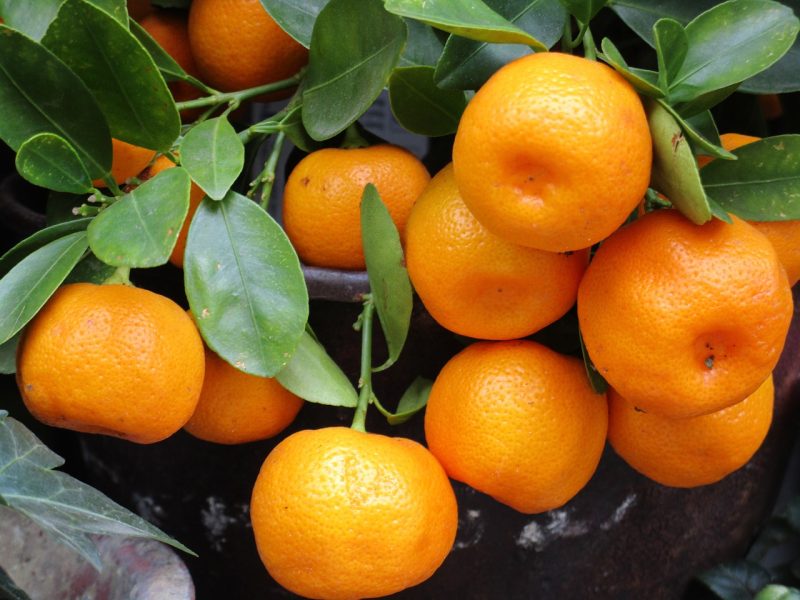
Florida oranges are renowned for their sweetness and juiciness, making them a favorite choice for fresh eating and juice production. Iconic varieties like the ‘Valencia’ and ‘Hamlin’ thrive in Florida’s climate and provide fruitful harvests for years. Oranges are not only delicious but also packed with essential nutrients, including vitamin C, potassium, and fiber, offering numerous health benefits. Growing orange trees can create a delightful sensory experience as they produce fragrant blossoms in the spring.
Growing Conditions:
Soil: Sandy, well-draining soil with a slightly acidic pH.
Sunlight: Citrus trees thrive in full sun (8-10 hours of direct light).
Regions: Almost the entire state, particularly central and southern regions.
Care Tips: Regular watering during dry periods is essential. Fertilize with balanced fertilizers specially formulated for citrus. Pruning helps keep the tree healthy and can enhance fruit quality.
Harvesting sun-ripened oranges directly from your tree creates a wonderful experience and adds a sack of vitamin C to your diet.
Lemons
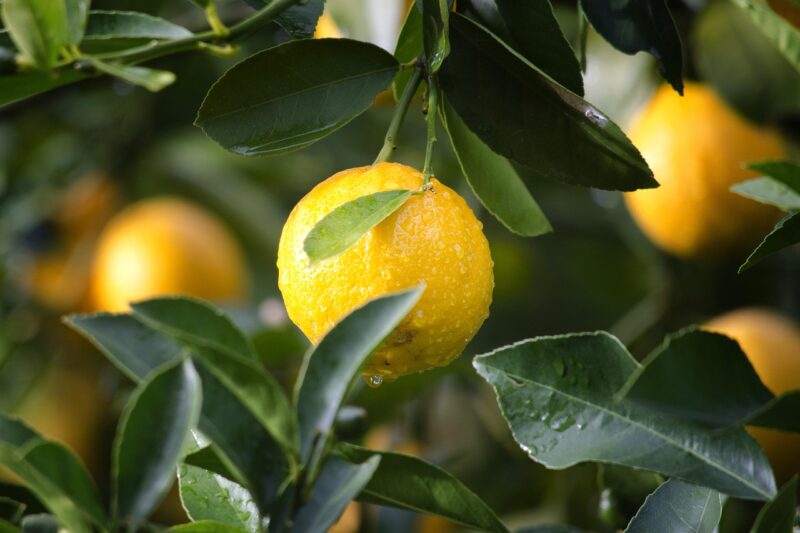
Lemon trees, notably the ‘Eureka’ and ‘Improved Meyer’ varieties, flourish in Florida’s warmer climate, producing tangy fruits all year round. Known for their versatility, lemons can enhance curing, dressing, and cocktails or be used in sweet and savory dishes alike. Lemon trees are remarkable for their fragrant blossoms and glossy leaves, enhancing the beauty of your garden. With high levels of vitamin C, folate, and potassium, growing lemons can be a wonderful addition to any home garden.
Growing Conditions:
Soil: Best in sandy loam that drains well and is rich in organic materials.
Sunlight: Lemons thrive in full sun for at least 8 hours daily.
Regions: Suitable throughout Florida, particularly in southern areas.
Care Tips: Ensure regular watering, protecting the trees from strong winds and pests like aphids or spider mites that can cause damage. Fertilize with a suitable citrus fertilizer for optimal growth.
With their distinctive aroma and taste, fresh lemons can elevate dishes, drinks, and desserts alike.
Limes

Lime trees, including ‘Key’ and ‘Persian’ (Tahiti) varieties, thrive in Florida and are relatively easy to grow. Popular for their essential role in beverages like margaritas and mojitos, lime trees are also prized for their fragrant blooms. Their small, vigorous habits make them suitable for home gardens, and they can be grown in containers, which is perfect for gardeners with limited space. Limes, rich in vitamin C, antioxidants, and antiviral properties, support overall health while providing a tangy flavor in culinary creations.
Growing Conditions:
Soil: Prefers well-drained, sandy soils that retain moisture.
Sunlight: Requires full sun, about 8-10 hours of direct sunlight.
Regions: Best for southern Florida; care should be taken to protect from frost in northern areas.
Care Tips: Ensure regular watering, especially during hot, dry spells. Manage pests effectively with organic pesticide options to maintain healthy trees.
Imagine slicing a lime straight from the tree to add some zest to your guacamole or cocktails—pure garden delight!
Grapefruit
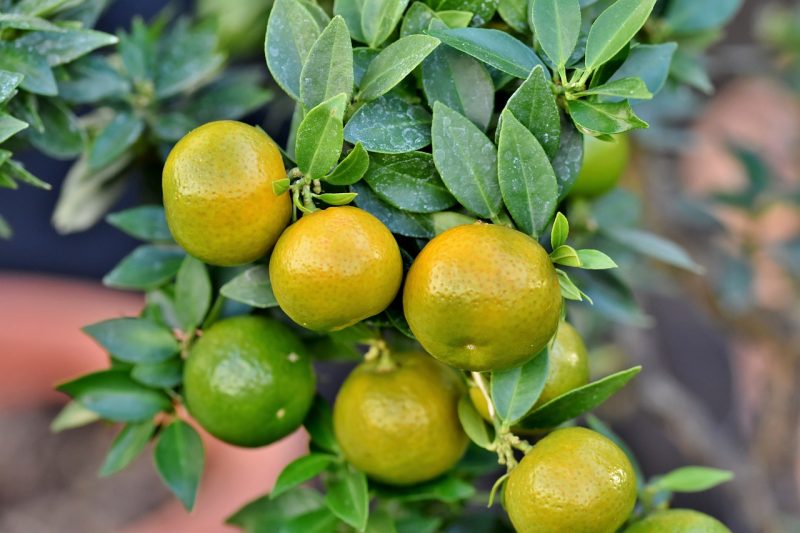
Grapefruit trees like ‘Ruby Red’ and ‘White Marsh’ thrive in Florida’s warm, moist environment, producing tangy fruits that are healthy and refreshing. Known for their high vitamin C content and other important nutrients, grapefruit can experience significant fruit production during Florida’s long growing seasons. Beyond their delicious flavor, grapefruit trees are also visually stunning with their ornamental form, making them an attractive addition to your garden while supporting local wildlife by providing food and habitat.
Growing Conditions:
Soil: Thrives in well-drained, sandy soils; slightly acidic pH is ideal.
Sunlight: Requires full sun exposure for at least 8 hours daily.
Regions: Grows well across Florida but especially thrives in central and southern parts.
Care Tips: Grapefruit trees appreciate steady moisture, but they should not be waterlogged. Regular pruning helps enhance airflow, preventing diseases, and improving fruit quality.
Harvesting juicy grapefruit from your tree and squeezing them into morning juice offers a refreshing start to the day.
Figs
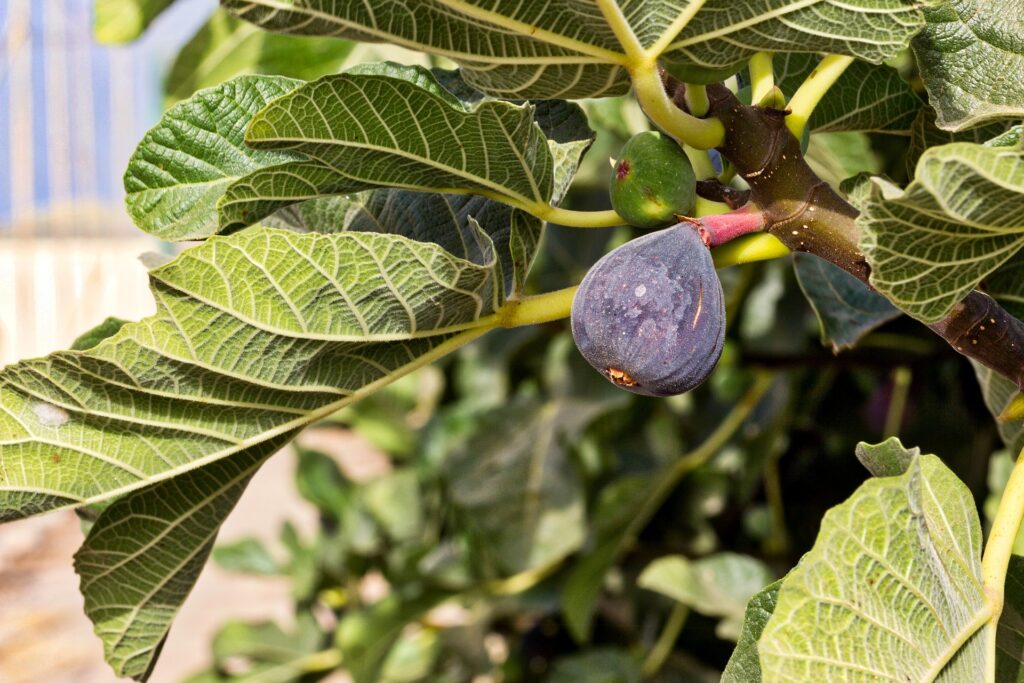
Figs are an excellent choice for Florida gardens, particularly in the northern and central regions. The varieties ‘Brown Turkey’ and ‘Kadota’ are popular for their sweet, rich flavor that lends itself well to fresh eating, drying, and cooking. Figs are not only a delicious treat but also come with several health benefits; they are high in fiber, antioxidants, and essential vitamins and minerals. Fig trees moderate in size and produce lush green leaves, adding beautiful textures to your garden while also supporting local ecosystems through their flowers.
Growing Conditions:
Soil: Prefers well-drained, loamy soils but adapts to poorer soils.
Sunlight: Figs appreciate full sun, ideally 6-8 hours of direct sunlight.
Regions: Suitable for most of Florida, particularly in well-drained areas.
Care Tips: Figs require minimal maintenance and benefit from regular watering during dry periods. Light pruning in the spring helps maintain shape and encourages fruitful growth.
With their sweet nature, figs can be enjoyed fresh, dried, or incorporated into various culinary creations.
Guava
Guava trees are a fantastic choice for Florida gardeners who want to experience tropical flavors. The pineapple guava and strawberry guava varieties flourish in Florida’s warm and humid climate, yielding sweet fruits that are deliciously aromatic and nutritious. Guavas are rich in vitamins A and C, fiber, and antioxidants, contributing to health by supporting immune function and digestive health. Beyond their delightful taste, guava trees serve as excellent ornamental plants with vibrant flowers that attract pollinators to your garden.
Growing Conditions:
Soil: Enjoys well-drained, sandy soils enriched with organic matter.
Sunlight: Full sun exposure is essential, taking in at least 6-8 hours of sunlight.
Regions: Thrives in most of Florida, but best suited for southern areas.
Care Tips: Guava trees are relatively drought-tolerant once established but will produce more fruit with consistent watering. Protect young trees from frost and prune for shape and air circulation.
Delighting in the sweet and aromatic flavors of homegrown guavas is a true tropical treat.
Jackfruit
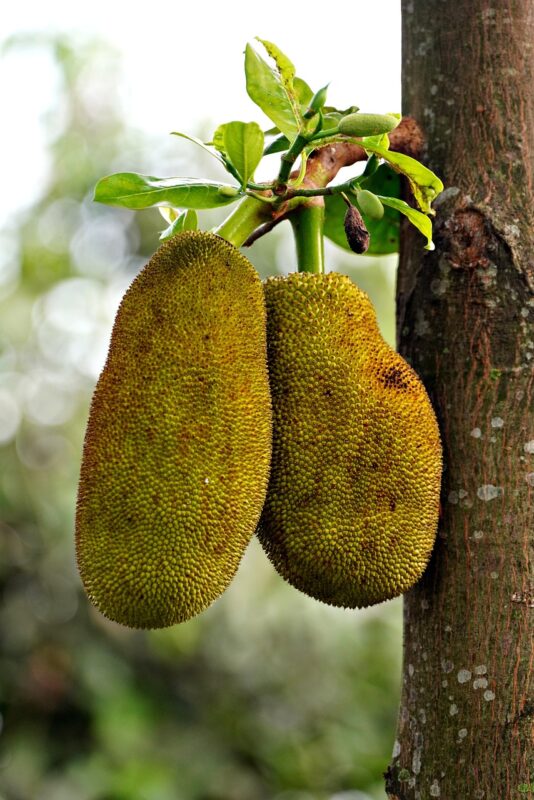
Jackfruit trees are remarkable for their large, sweet fruits, making them a unique addition to any Florida garden. Known for their impressive size, they can yield fruits that weigh up to 100 pounds, providing an extraordinary bounty. Jackfruit is an excellent source of dietary fiber, vitamins, and antioxidants, and its versatile flavor lends itself to a variety of culinary uses. Beyond providing substantial harvests, jackfruit trees enhance biodiversity by serving as habitats for various insects and birds while offering farmers an additional source of income and sustenance.
Growing Conditions:
Soil: Prefers well-drained, rich soil that retains some moisture.
Sunlight: Requires full sun for best growth.
Regions: Best suited for southern Florida; less ideal for northern regions due to cooler temperatures.
Care Tips: Water jackfruit trees regularly, especially during prolonged dry periods. Pruning young trees encourages a more manageable size and stronger structure.
With just one jackfruit tree, you can produce a surplus of fruit that can be used in savory dishes, desserts, or enjoyed fresh.
Loquats
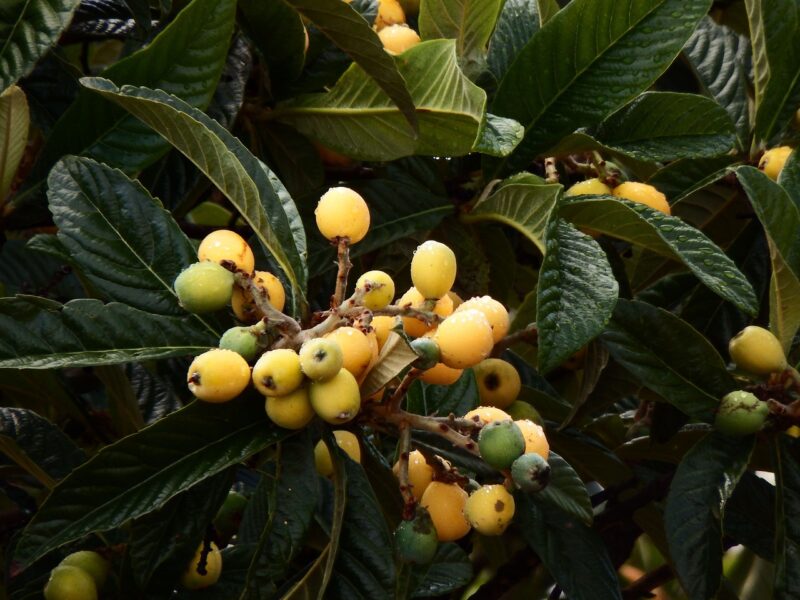
Loquats are lesser-known fruit trees that can flourish beautifully in Florida’s climate, adding both culinary potential and ornamental beauty to your garden. Known for their sweet, tangy fruits that ripen in the early spring, loquats are not only delicious but also loaded with beneficial nutrients, including vitamins A and C, and fiber. These trees produce beautiful white flowers in spring, attracting pollinators and adding visual interest to your landscape throughout the year. Whether used in recipes, enjoyed fresh, or transformed into jams and jellies, loquats offer a delightful addition to any garden.
Growing Conditions:
Soil: Thrives in well-drained, sandy soils but can tolerate poor soil conditions.
Sunlight: Prefers full sun exposure but can tolerate some partial shade.
Regions: Grows well in most regions of Florida, particularly in the warmer southern climates.
Care Tips: Water adequately, especially during fruiting, and remove any competing weeds. The tree benefits from periodic pruning to maintain its shape and fruiting capacity.
Loquats’ sweet and slightly tangy fruits can be enjoyed in late winter to early spring, making them a delightful treat, pre-summer harvest.
Lychee
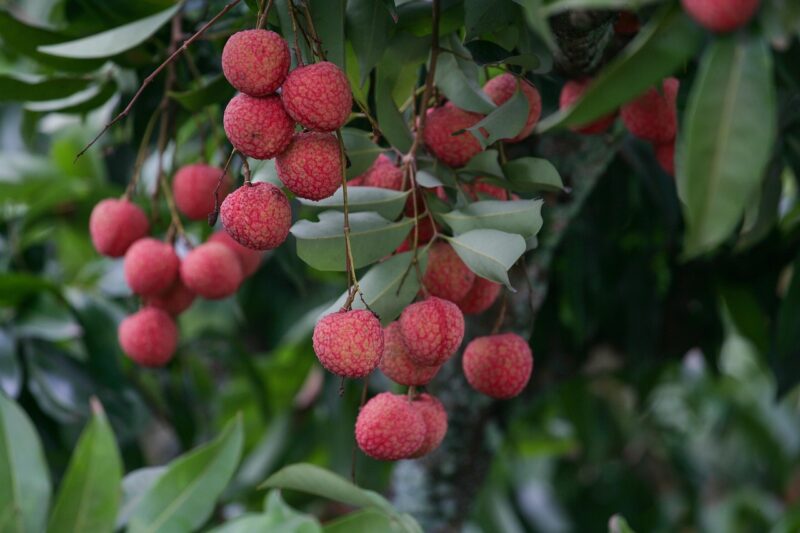
Lychee trees are an exotic choice for Florida gardeners, especially those located in the southern regions where the climate is warm and humid. Known for their sweet, aromatic fruits, lychees are not only delicious but also packed with vitamins C and B and antioxidants. The trees require careful attention to specific growing conditions, including protection from frost, making them a unique venture for the dedicated gardener. The luscious fruits light up local markets during their growing season, and the beautiful blossoms of lychee trees provide a stunning visual display that attracts pollinators.
Growing Conditions:
Soil: Enjoys well-drained, acidic soils rich in organic matter.
Sunlight: Full sun is essential for healthy growth.
Regions: Best suited for South Florida, particularly in coastal locations.
Care Tips: Lychee trees benefit from consistent watering, particularly during the dry season. They require some shelter from harsh winds and cold temperatures to protect their delicate blossoms.
Harvesting ripe lychees from your garden can be an incredibly indulgent experience, particularly considering their sweet, juicy flavor.
Mangoes
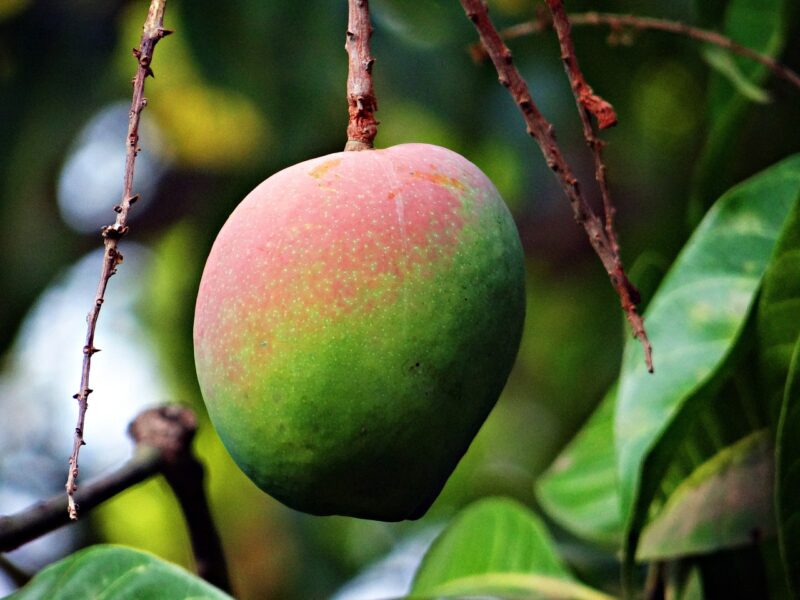
Mango trees symbolize tropical bliss and thrive particularly well in Florida’s warm climate. Varieties such as ‘Haden,’ ‘Tommy Atkins,’ and ‘Kent’ yield sweet, vibrant fruits that can be grown successfully throughout the state, particularly in southern regions. Mangoes not only provide a burst of tropical flavor but are also high in vitamins A and C, fiber, and antioxidants. Their lush leaves and fragrant blossoms enhance the visual aesthetics of your garden, while their fruit creates a sensory delight that evokes the essence of summertime. Growing mangoes fosters connections to local biodiversity by supporting pollinators and providing habitat for native wildlife.
Growing Conditions:
Soil: Prefers well-draining sandy soils with adequate organic matter; pH around 5.5 to 7.5 is ideal.
Sunlight: Full sun exposure is crucial for healthy fruit production.
Regions: Suitable for the entire state, especially prominent in southern Florida.
Care Tips: Watering is essential during dry spells, but mature trees are somewhat drought-tolerant. Regular pruning helps shape young trees and encourages stronger fruiting branches.
The joy of harvesting ripe mangoes is unparalleled, and they can be savored fresh, blended into smoothies, or used in tropical desserts.
Mulberries
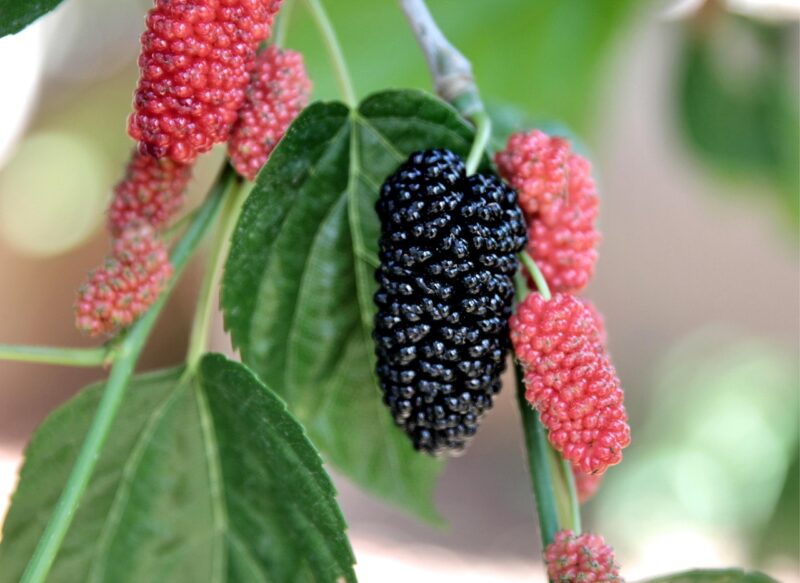
Mulberry trees are remarkably adaptable and can thrive well in Florida’s diverse climates, showcasing their berries and decorative foliage. The ‘Black’ and ‘White’ mulberry varieties are perfect for attracting birds and other wildlife while producing sweet, juicy fruits that can be enjoyed fresh, dried, or made into jams. The deep roots and extensive foliage of mulberry trees assist in soil stabilization and help in preventing erosion, while their flowers provide vital resources for bees and other pollinators. Rich in antioxidants, vitamins C and K, and dietary fiber, mulberries are both delicious and nutritious.
Growing Conditions:
Soil: Prefers well-drained, sandy or loamy soils; adapts well to different conditions.
Sunlight: Full sun to partial shade—preferably around 6-8 hours of sun.
Regions: Grows well across Florida but especially thrives in central and southern parts.
Care Tips: Mulberries are relatively low-maintenance but will benefit from regular watering during drought periods. Prune for shape and airflow, ensuring a healthy tree.
With sweet berries reminiscent of blackberries and raspberries, fresh mulberries are perfect for eating straight from the tree, baking, or making jams.
Papayas
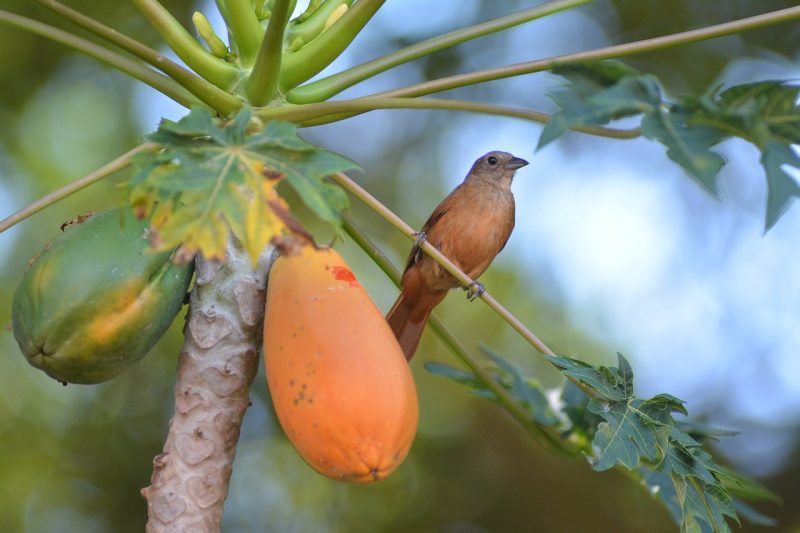
Papaya trees exude a tropical flair while producing sweet, succulent fruits. Florida’s warm climate allows for rapid growth, with some varieties beginning to produce fruit within a year of planting. Papayas are not only delicious but also highly nutritious, being rich in vitamin C, potassium, and digestive enzymes. Their distinctive shapes and leafy crowns add visual appeal to any garden. Planting papaya trees can help improve local ecosystems by attracting pollinators and providing food resources for various creatures.
Growing Conditions:
Soil: Prefers well-drained, sandy or loamy soils.
Sunlight: Best performance occurs in full sun (6-8 hours daily).
Regions: Thrives particularly well in southern Florida but can be grown throughout the peninsula.
Care Tips: Ensure consistent watering, especially in the early stages of growth. Mulching helps maintain soil moisture, and it’s important to protect plants from frost.
Enjoying the flavor of sweet, freshly picked papayas is a delightful component of tropical living.
Peaches
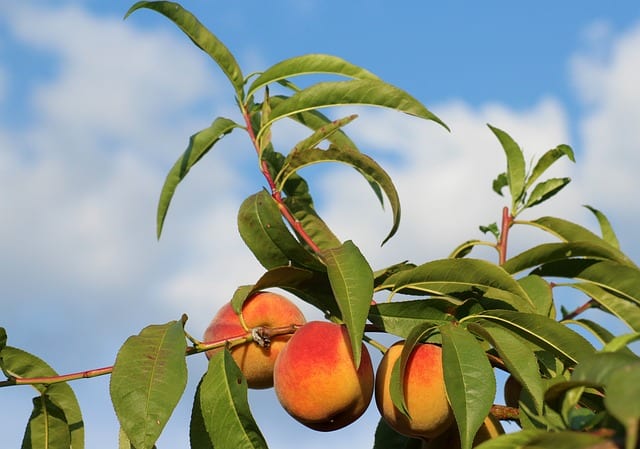
Although Florida isn’t traditionally known for peaches, low-chill varieties like ‘Florida King’ and ‘Tropic Beauty’ have been bred for warmer climates and can thrive in the state’s conditions. These peaches can yield sweet, juicy fruits and are relatively low maintenance once established. Peaches are not only delicious but also provide significant health benefits, being rich in vitamins A and C, potassium, and antioxidants. Growing peach trees allows gardeners to contribute to local biodiversity by providing flowers that attract pollinators while enjoying the bounty of homegrown fruit.
Growing Conditions:
Soil: Prefers well-drained, sandy loam with pH of 6.0-6.8.
Sunlight: Requires full sun exposure for optimum fruit development.
Regions: Grows best in central and southern Florida.
Care Tips: Regular watering is important, particularly during dry or dormant seasons. Pruning is essential to manage growth and improve productivity.
With proper care, Florida gardeners can enjoy juicy peaches that are perfect for baking, desserts, or enjoying fresh.
Persimmons
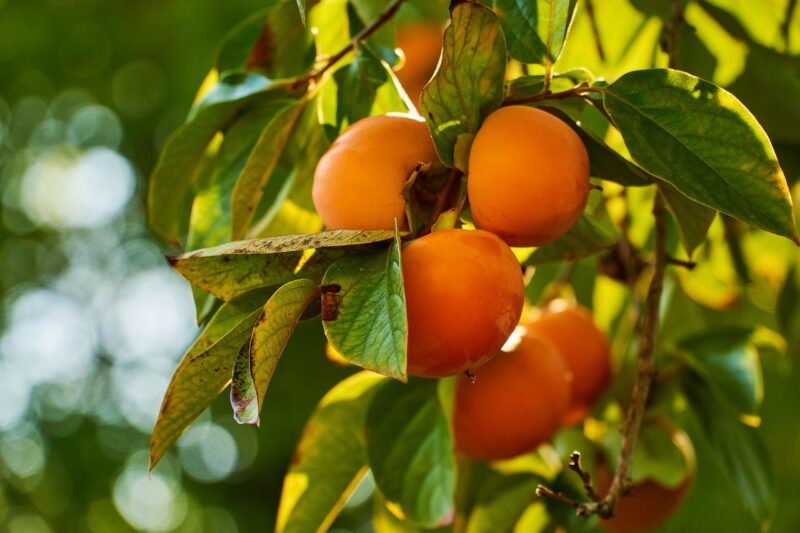
Persimmons are a unique addition to Florida gardens, adapting well to the warm environments. The native American persimmon (Diospyros virginiana) and the exotic Japanese persimmon (Diospyros kaki) both thrive in Florida’s climate and provide sweet fruits that are high in vitamins A and C, fiber, and antioxidants. Growing persimmons enriches local ecosystems by attracting pollinators, and their fall foliage brings vibrant color to landscapes. These trees can also serve as attractive shade plants while providing delicious fruit for consumption.
Growing Conditions:
Soil: Flourish in well-drained sandy soils; can adapt to varying pH levels.
Sunlight: Beneficial for full sun exposure, requiring at least 6-8 hours daily.
Regions: Thrives predominantly in central and southern Florida.
Care Tips: Regular watering is crucial during the dry season, while minimal pruning is usually needed. Be on the lookout for pests like scale insects.
Homegrown persimmons can be enjoyed fresh, dried, or in various recipes, showcasing their unique flavor.
Tamarind
Tamarind trees are an exotic addition to Florida gardens, perfectly suited to the warm and humid environment. Known for its pod-like fruits that have a sweet and tangy flavor, tamarind is a versatile ingredient in many culinary dishes. The tamarind tree is not only a delicious fruit source but can also yield various medicinal properties. Additionally, its attractive foliage and overall structure offer ornamental benefits while supporting beneficial insects and birds.
Growing Conditions:
Soil: Prefers well-draining, sandy or loamy soils.
Sunlight: Requires full sun for strong growth.
Regions: Thrives well in southern Florida but can be grown in other areas with adequate warmth and sunlight.
Care Tips: Water the tree regularly, particularly during dry spells and protect it from frost or strong winds to promote healthy growth.
Enjoying tamarind’s unique flavor in beverages and dishes adds an exciting touch to your culinary repertoire.
Apples
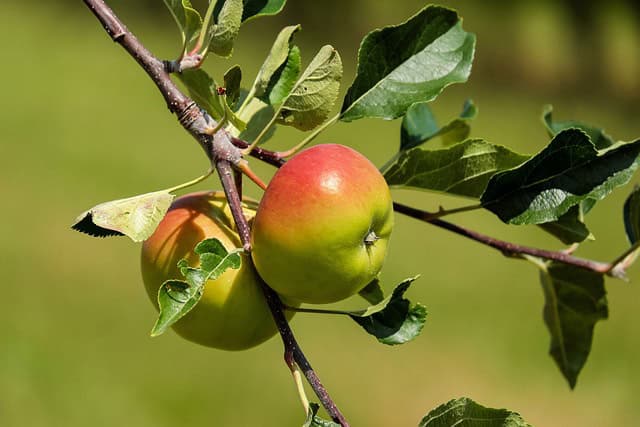
While apples are generally associated with cooler climates, several varieties are well-suited for Florida’s subtropical environment. The Anna apple and Dorsett Golden, in particular, are excellent selections that require fewer chilling hours than traditional varieties. These apple trees can produce fruit in late spring, allowing Florida gardeners to enjoy crisp, juicy apples straight from their backyard. Not only do they flourish in well-drained sandy soil, but they also contribute significant nutritional value to your diet. Apples are high in dietary fiber, vitamin C, and various antioxidants. Planting these varieties allows you to experience the satisfaction of harvesting your apples, whether you enjoy them fresh, turned into cider, or baked in pies.
Growing Conditions:
Soil: Well-drained, sandy loam soils are best.
Sunlight: Full sun exposure (at least 6-8 hours daily).
Regions: Suitable for north and central Florida, where chilling hours are met.
Care Tips: Regular pruning helps maintain shape and encourages better air circulation. Be vigilant about pests such as apple maggots and codling moths.
With enough attention and care, Florida garden enthusiasts can enjoy sweet, crunchy apples any time of the year.



